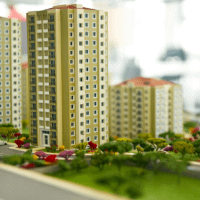Introduction
The future of remote work is poised to significantly reshape real estate demand and prices, with profound implications for both residential and commercial sectors. As remote work becomes more entrenched, it is driving a shift in housing preferences and altering the landscape of office space utilization. This transformation is characterized by a move towards suburban living, a decline in traditional office space demand, and an increased focus on flexible and community-oriented living arrangements. These trends are expected to have lasting impacts on real estate markets, influencing both demand and pricing dynamics.
Shift in Residential Real Estate Demand
The emergence of remote work as a permanent fixture in the employment landscape has significantly influenced housing demand, particularly in suburban and rural areas. As employees have shifted to more flexible work arrangements, they are increasingly drawn to larger living spaces that provide not only comfort but also an enhanced quality of life. This trend reflects a notable migration away from densely populated urban centers, where the hustle and bustle of city life is often accompanied by limited living space and higher costs of living. The appeal of suburban and rural settings, characterized by spacious accommodations and a more tranquil environment, has resonated with many individuals and families seeking a better work-life balance. Studies, such as those conducted by Pattnaik in 2024, and Howard et al. in 2023, underline this shift in housing preferences as a critical factor in the real estate market.
In the short term, this surge in demand has triggered considerable increases in both rental prices and property values across these less densely populated regions. This heightened interest has led to competitive bidding situations and a rapid escalation of costs, reflecting a stark contrast to pre-pandemic housing trends. However, long-term forecasts indicate that this upward trajectory in rent and property prices may stabilize more than initially anticipated. Analysts predict a gradual increase in rental prices, estimating an average rise of only 1.8 percentage points in the years to come, as outlined in research by Howard et al. in 2023. This moderation suggests that while the initial impact of remote work has been pronounced, the market may adjust over time, leading to a more balanced and sustainable growth pattern in housing costs.
Additionally, the evolving preferences of renters and homebuyers are reshaping the geographical dynamics of housing markets. There is an emerging trend indicating a potential decline in rents within traditionally high-demand urban areas, as individuals choose to relocate to regions with lower population density. This shift not only affects the rental market but also signals a transformative change in the desirability of various locations. The migration toward suburban and rural locales, as outlined in the findings by Howard et al. in 2023, could lead to an overall recalibration of real estate values and demand, indicating a significant shift in how location factors influence housing choices in the current economic climate. This transition marks a pivotal moment in the housing industry, influenced by the lasting effects of remote work.
Transformation of Commercial Real Estate
The noticeable decline in demand for traditional office spaces has resulted in a significant increase in office vacancies across various markets. This trend has prompted real estate professionals and businesses alike to seek out innovative and creative strategies tailored to meet the changing landscape of work environments. According to Akalin (2024), the shift in demand reflects a broader transformation in how companies perceive and utilize physical office spaces. As the conventional model of fixed office locations loses its appeal, there is a growing necessity for real estate solutions that are not only adaptable but also responsive to the specific needs of modern workforces.
In response to these shifts, companies are actively re-evaluating their real estate strategies. The focus is now on creating flexible and hybrid work environments that prioritize employee well-being and productivity. Huang (2024) highlights that this new approach is not merely a reaction to current trends but rather a proactive stance toward fostering a more engaged and satisfied workforce. The emphasis on flexibility allows companies to cater to diverse employee preferences, providing options that enable individuals to choose how and where they work effectively. This strategic reorientation represents a significant cultural change within organizations, acknowledging that the traditional office model may no longer serve the best interests of employees or employers.
Furthermore, investments in adaptable workspaces are increasingly recognized as a forward-thinking choice. These types of spaces are designed to accommodate various work styles and can be easily reconfigured to meet the changing needs of different teams and projects. Huang (2024) asserts that these investments not only promise long-term profitability but also align with the evolving paradigms of work that continue to emerge. As businesses adapt to a more dynamic workforce, the ability to create environments that can swiftly adjust to various demands becomes a critical asset. This approach not only enhances operational efficiency but also positions companies favorably in an increasingly competitive market, enabling them to respond to ongoing changes in employee expectations and industry standards.
Implications for Urban Development
The ongoing shift towards remote work is reshaping the landscape of urban planning and policy-making. As more individuals and organizations embrace flexible work arrangements, urban planners are increasingly recognizing the importance of incorporating flexibility, sustainability, and inclusivity into their strategies for urban development. This evolution in work habits compels a reevaluation of how cities are designed and structured, leading to a greater emphasis on creating environments that accommodate both remote and in-person work. Planners are tasked with reimagining urban spaces, ensuring that they support diverse needs and lifestyles while fostering vibrant communities.
At the same time, the remote work transition is having significant implications for local public finance and climate policies. Governments are confronted with the necessity to reassess their revenue structures and expenditure priorities, as traditional tax bases may be altered due to shifts in population distribution and employment patterns. This situation demands thoughtful and strategic responses to address the fiscal challenges posed by a changing workforce landscape. Furthermore, the environmental impact of remote work practices calls for a rethinking of climate policies, as urban areas may require new approaches to minimize their carbon footprint while accommodating the evolving needs of a hybrid workforce. Overall, the intersection of remote work dynamics with urban development and policy presents a complex yet essential area for innovative solutions and strategic planning in the years to come.
Conclusion
The transition towards remote work has opened new avenues for innovation and adaptation within the real estate sector, reflecting significant changes in how both commercial and residential spaces are utilized. This shift, however, does not come without its set of challenges. One of the foremost challenges is the rising delinquency rates observed in various real estate markets, as the demand for traditional office spaces declines and tenants struggle to meet their financial obligations amidst economic uncertainties. This phenomenon raises concerns regarding the long-term viability of investment properties and the overall health of the real estate market.
In addition to financial challenges, there is an urgent need for sustainable urban planning that takes into account the evolving dynamics of the workforce. As remote work becomes more entrenched, urban areas must adapt to accommodate changes in population density and the distribution of amenities. This calls for a re-evaluation of existing infrastructure, public transportation systems, and community spaces to better align with a workforce that is increasingly flexible and mobile.
Policymakers and business leaders are faced with the complex task of navigating these interrelated issues. They must devise real estate strategies that not only address the immediate financial impacts of changing work patterns but also contribute to the long-term sustainability of urban environments. This involves a proactive approach to urban development that prioritizes the needs and preferences of a diverse workforce while ensuring that communities remain vibrant and economically viable. The extent to which these stakeholders can effectively manage these complexities will ultimately determine the resilience and adaptability of the real estate sector in a post-pandemic world, where the traditional paradigms of work and living continue to evolve.






